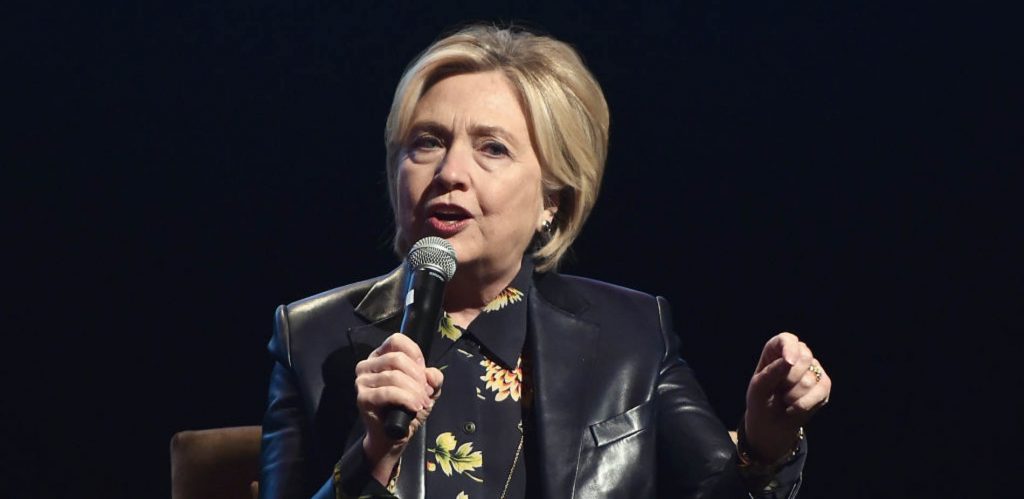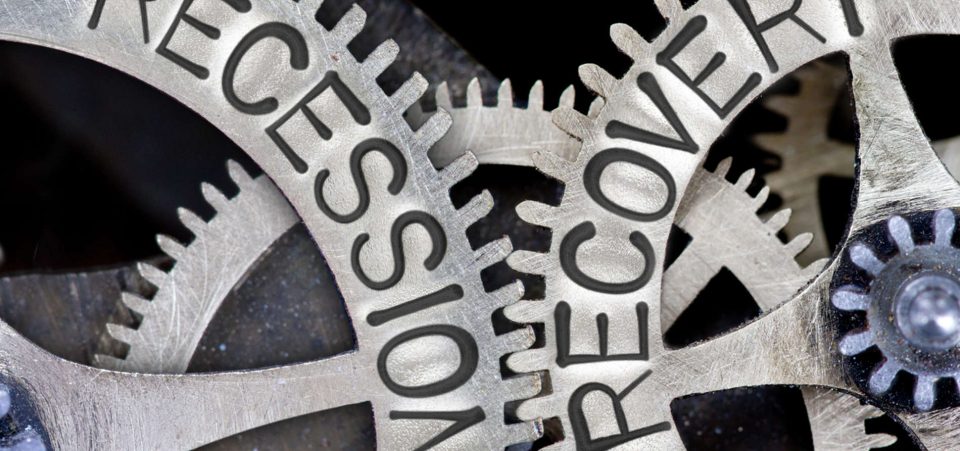Is a Trump Recession Coming in 2018?
In the days when the U.S. media still talked about the issues that Americans cared about—you know, things like the economy, jobs, and the cost of living—some even dared mention the “R” word. Noted rating agency Moody’s Corporation (NYSE:MCO) expected a recession had Trump won, even as it praised all the billionaires that Hillary Clinton managed to bring on board her presidential campaign train in the summer of 2016. If you think Wall Street’s record of 2017 means that Moody’s Trump recession prediction has failed, think again. Moody’s Trump’s recession prediction may not have occurred, but nobody’s off the hook yet.
Granted, Moody’s would do itself and many others a favor if it left the art of pontification to the Pope in Rome. After all, many Americans have reason to hold Moody’s in contempt, after the U.S. Department of Justice determined that Moody’s was one of the culprits in inflating the ratings of the securities that imploded in 2007-2008, causing the subprime crisis. (Source: “Moody’s Reaches $864 Million Subprime Ratings Settlement,” Bloomberg, January 13, 2017.)
Moody’s praised Hillary Clinton’s proposals because they would produce a stronger U.S. economy. Her program by the late summer of 2016 had incorporated many of Bernie Sanders’ progressive ideas. These would have implied a tax hike at corporations’ expense to pay for infrastructure and medical care benefits. (Source: “Moody’s: Clinton will make economy ‘stronger’ vs. Trump ‘recession’,” CNBC, August 1, 2016.)
Nevertheless, the way the markets have reacted to Trump’s tax cuts—vastly skewed in favor of the richest Americans and corporations—raises the obvious question: How would the markets have reacted had Hillary won?
Trump’s “wise” foreign policy and his assorted policy funambulating certainly have nothing to do with the Dow Jones’ reaching 25,000 points. It’s all in the tax reduction. Companies have praised the tax cuts, saying they can invest more in growth, they can hire more people, and even give employees Christmas bonuses.
It’s Not That Hillary Would Have Done Better
A Hillary Clinton presidency may have worsened relations between Russia and the United States, given that she would have taken a more “hands-on” policy over Syria. She would have contrasted Vladimir Putin directly in his efforts to stabilize President Asad’s government. But it would have done little to produce the kind of corporate “confidence” that Trump has generated—aside from in defense stocks.

Credits: Alberto E. Rodriguez/Staff/Getty Images
Despite past embarrassments, in the longer term, Moody’s Trump recession prediction could turn out to be the most clairvoyant comment that the rating agency ever made. This is no merit on Moody’s part. It doesn’t take a genius to figure out that the combination of rapturous stock market performance and the shifting of the fiscal burden on the middle classes will duly raise many questions about the U.S. national debt.
Apart from fiscal incentives, cheap money has fueled the financial markets in the U.S. (as well as Europe). The Federal Reserve’s practice of quantitative easing (QE), championed by Federal Reserve Chairs Paul Bernanke and Janet Yellen, served as a shock-absorber in the darkest days of the post-2008 subprime crisis.
QE may yet prove to have been a significant instrument that helped avoid financial collapse from spilling into total socio-economic failure. But it fueled an unwanted process. Because of low interest rates, conservative but safer investment tools—like savings accounts—became useless investment tools.
Cheap Money Has Driven Wall Street Not Smart Policy
The availability of money at low interest rates has fueled one of the longest bull markets in history. Trump may have been president during an especially intense market growth phase but it all started with President Barack Obama. In other words, given the independence of the Fed, the White House—whether Obama or Trump—has little to do with the recent stock market performance. The interest rate circumstances have been simply exceptional. Had a baboon or his more charming cousin, the chimpanzee, sat at the desk in the Oval Office, the Dow would have continued along its overly optimistic path, unhinged.
Yet, all good things, especially parties, must come to an end. Yes, Trump’s tax cuts will boost economic growth, but only in the short term. Enjoy it while you can, because nobody knows when the “beige stuff” will hit the fan. The non-partisan Congressional Budget Office, whose job is to evaluate the impact of Congress’s tax laws, has already predicted that U.S. debt could increase by $1.4 trillion. (Source: “Senate tax bill increases deficit by $1.4 trillion,” The Hill, December 12, 2017.)
U.S. debt stands at about $20.0 trillion now.
How are Republicans, the party of fiscal responsibility, going to sustain such flagrant policies that boost deficits and debt? Trump’s reform is supposed to pay for itself, just as President Ronald Reagan’s tax cuts were going to do in 1986. They called it “trickle-down economics” or “supply-side economics,” depending on which side of the aisle you sat.
More than growth, jobs, and strengthening the middle classes, the Reagan tax cuts inflated federal debt. When Reagan stepped into the White House, U.S. debt was at $934.0 billion; when George Bush replaced him in January 1989, the debt was $2.7 trillion. (Source: “The Abject Failure of Reaganomics,” Consortium News, October 17, 2013.)
Beware the Debt
The Federal Reserve is preparing for a change. Jerome Powell will replace Janet Yellen in the next few weeks. He’s expected to stay the current low-interest course. There’s no doubt he will stay on course because any abrupt shift, like making one too many interest rate hikes, would add massively to the U.S. debt burden while making the Dow’s current record shillyshally.
Consider that a single percentage-point interest rate hike means that U.S. taxpayers would have to pay an additional $200.0 billion a year in interest alone. One more devastating hurricane, sudden military engagement, or 9/11-like event would smash the bank.
The Fed is hostage to the tax cuts. It has lost flexibility and it leaves Americans and the markets at the whim of external events, less able to react to shocks in the economic system. Recessions are part of the economic cycle. Often, governments—in free market systems—have few tools to prevent them. But they have tools to adjust and contain their effects.
As things stand now, the U.S. lacks that ability. Washington is a bit like the “Titanic.” When the 2008 recession hit, the Fed reacted by lowering rates and containing the impact of multiple failures, from a crash in the value of housing to car companies on the brink. Shareholders were left with their savings in fumes and millions of workers were left unemployed.
Nobody knows when the next recession—whether in 2018, 2019, or later—will come. But, when it does, it will hit harder than 2008, finding the proverbial ship without a rudder. It will be a disaster.






